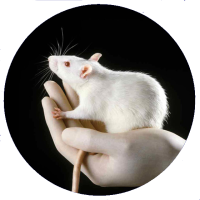September 11, 2007
Trans-Rodentism
 A Thinking Ape’s Critique of Trans-Simianism by Dresden Codak deserves to become a transhumanist classic. It is a through rebuttal to the curious notions that in the future within a single generation we might develop one or possibly even two new ideas.
A Thinking Ape’s Critique of Trans-Simianism by Dresden Codak deserves to become a transhumanist classic. It is a through rebuttal to the curious notions that in the future within a single generation we might develop one or possibly even two new ideas.
On the other hand we have the transrodents:
Professor Sqiiik of the Neuroscience Department of University of Cambridge recently suggested an unusual explanation for the genetic instability trend befalling rodent populations worldwide. According to him:
"We know that a large number of mutations are occuring these days, creating divergent families of rodents. Some can no doubt be explained by random mutations or environmental factors such as contaminated cheese. Dr Piiki from Oxford has suggested that we are seeing a case of genomic instability emerging. However, this theory has a hard time explaining why it occurs worldwide, at the same time and in such a patchy manner. We know that rats living near each other tend to develop linked mutations - rats living in the neuroscience department tend to get brain-related mutations, rats in the dermatology department get skin-related mutations while the genetics department produces mutations of all kinds.
I will stick my whiskers out and argue that we are seeing intelligent design. That is, there is a force out there that causes these mutations according to some plan. I have several pieces of evidence in favor of this admittedly strange conclusion.
The first one is the unlikelieness of many mutations. While we often see loss of function in the sufferers of "knock-out syndrome", sometimes we see not only gain of new functions. Recently several cases of familial fluorescence has been discovered, involving a gene that seems to have jumped from jellyfish to our species! There is ample evidence that genes from other species have appeared, including human genes, fly genes and bacterial genes.
But many of these genetic changes are not merely exceedingly unlikely, they are also strangely beneficial. We have evidence of mice developing extended lifespan, resistance to cancer, resistance to obesity, better memories, increased musculature and regeneration, color vision and a long list of other gains. While the majority of mutations produce tragic losses, the number of exceedingly unlikely beneficial mutations is far above what mere randomness could explain. They are also becoming more and more common. Even more telling, we see non-genetic complex changes such as the development of ears on the back, which clearly cannot be explained using genetic instability.
A parsimonious explanation would be a designer (or designers) aiming at enhancing our species. A perfect designer would of course instantly make us immortal, strong, smart and healthy, but imagine a weak and fallible designer who does not understand rodent biology. Such a being would be performing trial- and-error experimentation, trying to learn what works. If there are several such beings they may even specialise, explaining the differences between different places.
An obvious criticism is that if the designer is trying to help us, why is it causing so much pain and suffering? One possibility is of course that the designer is not truly helping us but merely attempts to understand biology in general, maybe aiming to help some other species like (say) humans. But a pro-human designer would clearly insert discoveries already made in rodents, and we see no evidence that humans have become smarter or even fluorescent.
I instead believe we are being tested. The designer seeks to help us in its inefficient, fumbling way, but in the process it also wants to learn what it truly means to be a rodent."